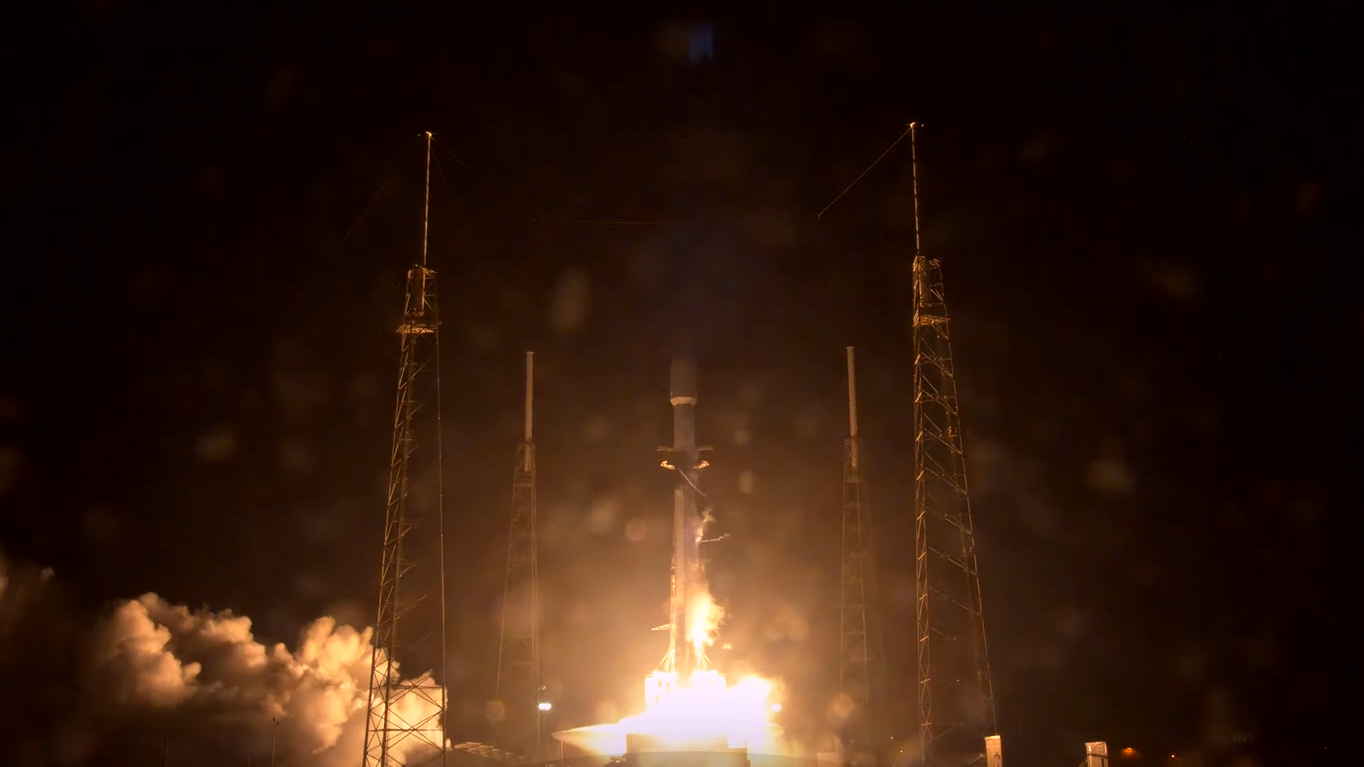SpaceX launches communications satellite, lands rocket at sea
SpaceX's Falcon 9 rocket launched the Intelsat G-37 communications satellite today (Aug. 3) from Cape Canaveral Space Force Station in Florida at 1:00 a.m. ET (0500 GMT.)
This marks the sixth launch for this particular Falcon 9 first-stage booster, which also flew the Crew-5 astronaut mission to the International Space Station.
About 8 minutes 30 seconds into the mission, after stage separation, the booster successfully landed on SpaceX's Just Read the Instructions droneship waiting offshore in the Atlantic Ocean.
Related: SpaceX rocket double play! Falcon 9 soars over Falcon Heavy in gorgeous launch video, photo
The payload on today's launch was the Galaxy 37/Horizons-4 communications satellite that will be jointly operated by Intelsat and JSAT International. The Maxar-built satellite will expand television and telecommunications access for North America and help free up swaths of the airwaves for 5G wireless communications service, according to a Maxar statement.
The SpaceX Falcon 9 placed the satellite into what's known as a geosynchronous transfer orbit, an elliptical orbit around 23,000 miles (37,000 km) above Earth that is used as an intermediate step before reaching geosynchronous orbit (an orbit that keeps a spacecraft over the same location on Earth).
today's launch marks the 251st total launch for SpaceX and the 51st mission of the year so far. The company launched its heavy-lift Falcon Heavy for the seventh time ever on July 28, placing the largest and heaviest geostationary communication satellite ever launched into orbit.
Breaking space news, the latest updates on rocket launches, skywatching events and more!
The Falcon 9 and Falcon Heavy are currently the only operational rockets in SpaceX's fleet. But the company is hard at work on its massive Starship, the largest and most powerful launch vehicle ever built. Starship has launched only once towards space in its fully-stacked configuration atop a Super Heavy booster, which ended in an explosion on the April 20 test flight.

Brett is curious about emerging aerospace technologies, alternative launch concepts, military space developments and uncrewed aircraft systems. Brett's work has appeared on Scientific American, The War Zone, Popular Science, the History Channel, Science Discovery and more. Brett has English degrees from Clemson University and the University of North Carolina at Charlotte. In his free time, Brett enjoys skywatching throughout the dark skies of the Appalachian mountains.

